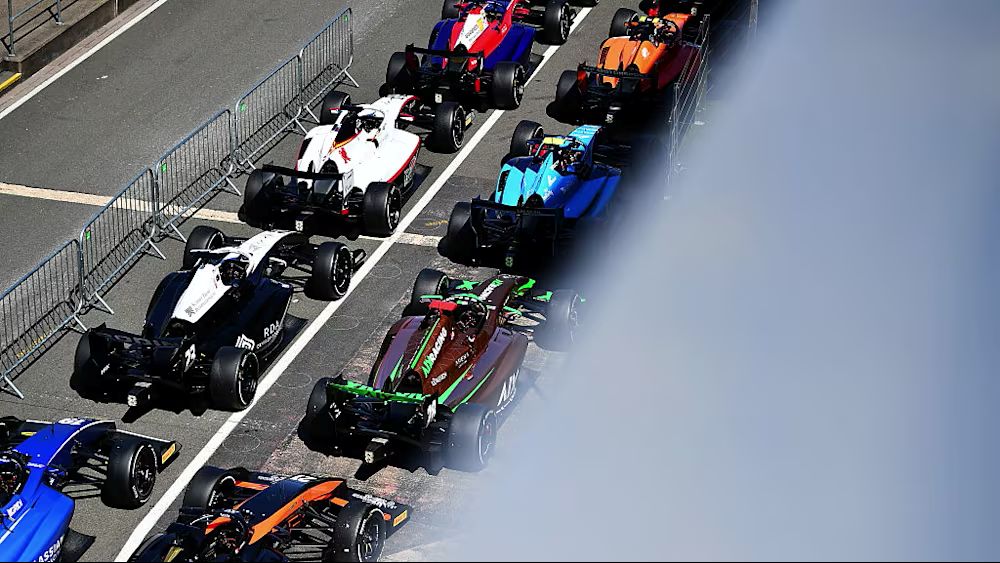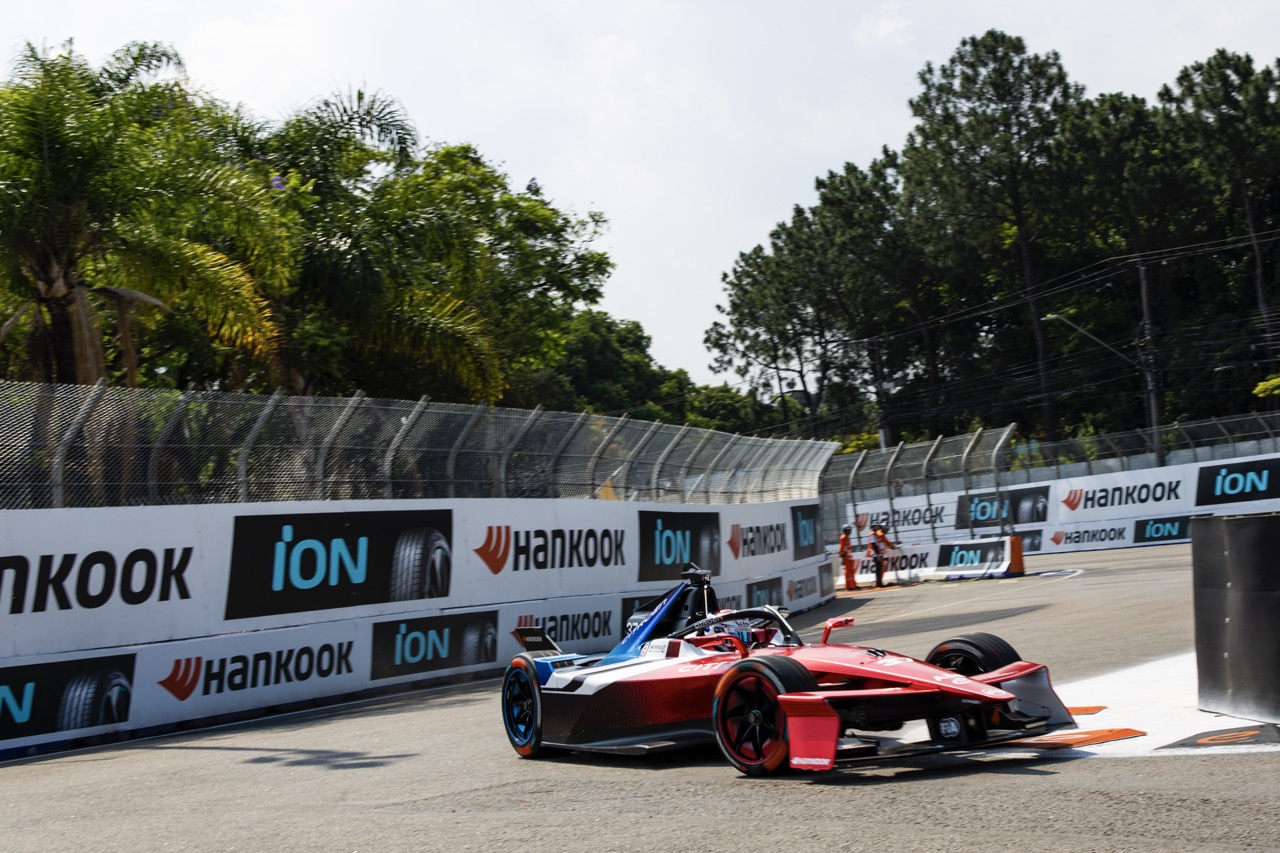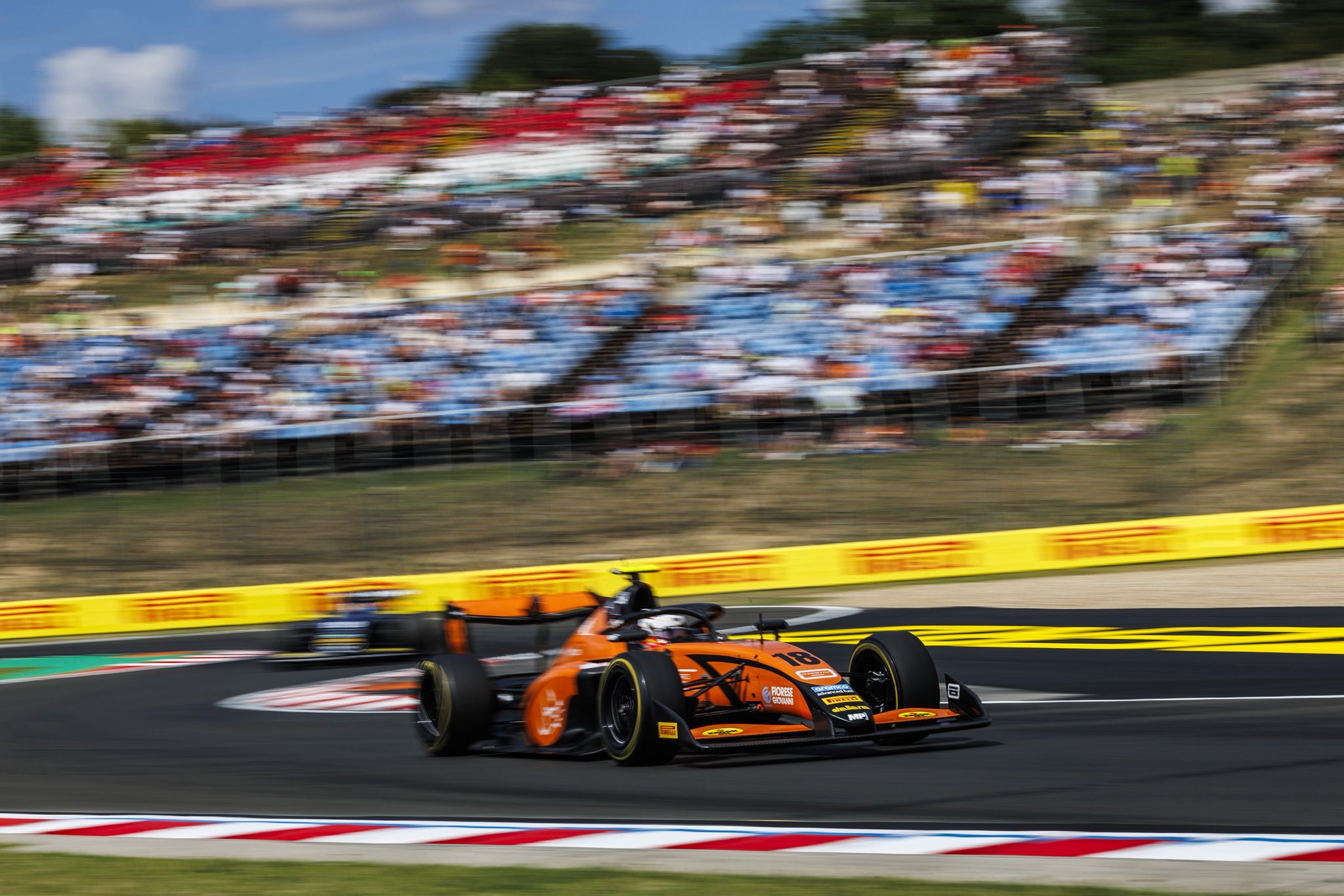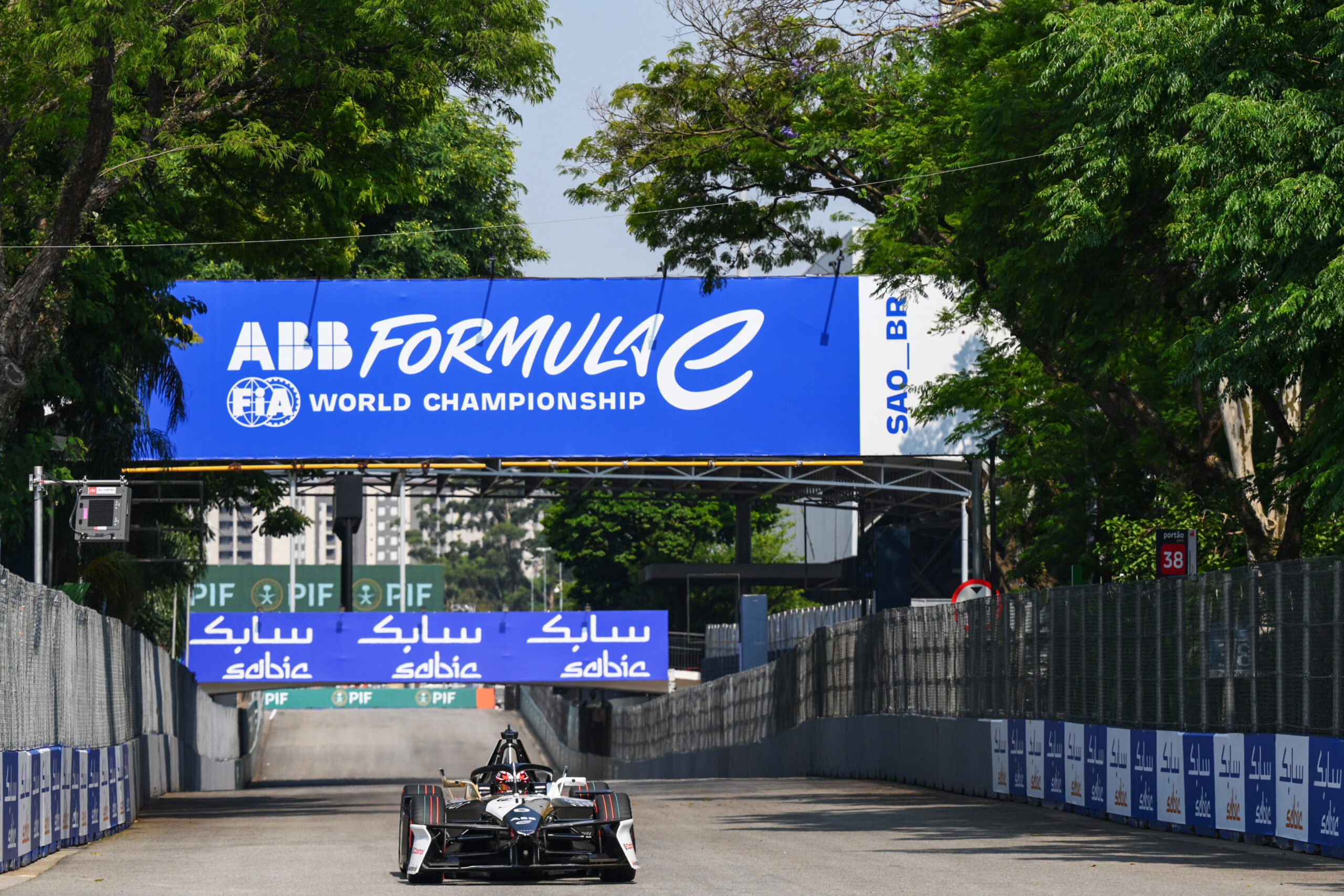The 2025 FIA Formula 3 car marks a bold new chapter in junior single-seater racing. As the season nears its conclusion, with nine of ten rounds completed, teams and drivers have gathered invaluable insights into how the aerodynamics influence the performance of the 2025 F3 car on track. Over the campaign, engineers have continuously adapted their setups to unlock the full potential of the 2025 F3 car’s aerodynamic package, which blends cutting-edge technology with practical simplicity.
This new generation F3 car features substantially redesigned aerodynamics that set it apart from its predecessor. Combined with larger 16-inch tyres, the 2025 F3 car presents a unique and challenging platform for drivers and teams alike. Its aerodynamic enhancements improve airflow management, reduce the turbulent wake behind the car, and enable closer racing — a critical factor for thrilling overtakes and wheel-to-wheel action.
Designing the 2025 F3 car’s aerodynamics inspired by F2
Pierre-Alain Michot, Technical Director for both FIA F3 and FIA F2, shed light on the aerodynamic philosophy guiding the 2025 F3 car’s design.
“The way we designed the new car has been to follow in the footsteps of F2, so mainly making sure that the car has better capability to follow the one ahead in an efficient manner and so they don’t lose too much downforce.”
The 2025 F3 car’s aerodynamics intentionally focus on reducing the loss of downforce when following closely behind another car. Downforce, generated by aerodynamic surfaces, pushes the car onto the track to improve grip, especially in corners. When a car follows another closely, the turbulent air (or “dirty air”) reduces downforce, causing loss of grip and making overtaking more difficult. The 2025 F3 car’s aerodynamic design mitigates this problem, allowing drivers to stay closer and overtake more effectively.
Michot also highlights the aesthetic balance maintained in the 2025 F3 car’s aerodynamic package:
“That was the main target we had. But we also wanted to keep the ‘family look’ in line with F1, but with a more conventional rear wing design.”
The car’s aerodynamics not only serve performance goals but also align visually with the modern F1 family of cars, fostering a sense of continuity and progression through the FIA single-seater ladder.
Starting fresh: Building the 2025 F3 car’s aerodynamics from scratch
The development of the 2025 F3 car’s aerodynamics started from a clean slate, giving designers a chance to rethink every element without being limited by previous models.
“We had a blank page beginning with this car. But we benefitted from the previous generation and the F2 car design in the process. But in the end, it’s a completely brand-new car, and none of the components are the same as before.”
This fresh start allowed engineers to optimise the 2025 F3 car’s aerodynamics specifically for the needs of the current racing environment, focusing on airflow efficiency, ease of maintenance, and driver development. It also permitted integration of lessons learned from the prior F3 car and the current F2 car, ensuring the 2025 F3 car aligns closely with its F2 counterpart in key aerodynamic concepts.
Simpler yet effective aerodynamics in the 2025 F3 Car
One of the core goals of the 2025 F3 car’s aerodynamic design was to reduce complexity without compromising performance. Michot clarifies:
“We wanted to have a smaller car that looked like an F2 one, but with a simpler floor, less complexity and downforce than in F2.”
The “floor” of a race car, that is the flat underbody surface, plays a crucial role in generating ground effect downforce. The 2025 F3 car uses a simpler floor design compared to F2, which reduces the aerodynamic complexity teams must manage.
“That was also to make setting the car up simpler and easier as well. It’s less complex than the F2 car and in terms of design, it’s easier for the teams but we’ve still been able to make it look like an F2 car, it’s just easier to maintain which is good for the teams and the drivers.”
This simplicity in the aerodynamics of the 2025 F3 car helps teams and drivers understand and control the car more effectively, speeding up their learning curve and reducing the time spent troubleshooting overly complex aero issues. This design philosophy ultimately creates a more accessible yet still challenging race car, perfectly suited for developing young talent.
Aligning the 2025 F3 car’s aerodynamics with the FIA pyramid
The FIA has structured single-seater racing into a clear ladder system to prepare drivers for Formula 1, with F3 serving as a vital step before F2. The 2025 F3 car’s aerodynamic package reinforces this pathway:
“From the front wing to the floor to the rear wing, it all had to be efficient as was part of the overall package and process. So, we still had to have a front wing looking similar to F1, and the sidepod mimicking the latest F1-spec without being as complex, along with having a rear wing which worked in terms of downforce and DRS efficiency.”
By echoing F1 styling cues and technological features, the 2025 F3 car’s aerodynamics offer drivers a learning environment that closely resembles what they will encounter in higher categories. The Drag Reduction System (DRS), which allows temporary reduction of rear wing drag to aid overtaking, has been optimized in the 2025 F3 car’s rear wing to balance performance and ease of use.
Single rear wing concept: Simplifying aerodynamics on the 2025 F3 car
Unlike the current F2 car, which offers teams two rear wing options (standard and low downforce), the 2025 F3 car features a single rear wing configuration carefully designed to be versatile across all tracks.
“We evaluated it at the time, but in the end, we wanted to keep it as a single concept for the rear wing.”
“We had to make sure that we could go from a low downforce set-up used at Monza to the highest downforce set-up. So, in the end, the wing that we designed was just to make sure we could accomplish this with a single configuration.”
This approach to the 2025 F3 car’s aerodynamics simplifies setup decisions for teams and allows for easier adaptation to different circuits without sacrificing performance. It reflects the philosophy of creating an efficient and manageable package that performs well across diverse race conditions.
Faster cornering thanks to 2025 F3 car aerodynamics and tyres
One of the most noticeable effects of the 2025 F3 car’s new aerodynamic package is improved cornering speed. Drivers report enhanced grip and downforce, allowing them to carry more speed through turns.
“When the drivers arrive in F3 from other categories further down the pyramid, they reach this level and it’s another level of downforce.”
“They need to accommodate for that added corner speed, and when they go up, it’s another step in a car that’s even more efficient. It’s about being able to give them a bit of a step-up and more to account for in their driving.”
In addition to aerodynamic improvements, the 2025 F3 car’s larger 16-inch tyres contribute significantly to its cornering abilities. The lower profile of these tyres reduces sidewall flex, enhancing handling precision.
“On the chassis side, we have a better handling car, and that’s also down to the low-profile tyres, because of the lower side wall. It means that the cars are better through mainly high-speed corners.”
Together, the 2025 F3 car’s aerodynamics and tyre specifications allow drivers to push harder in corners, demanding sharper racecraft and vehicle control skills.
Positive reception of the 2025 F3 car’s aerodynamics and design
Throughout the season, feedback on the 2025 F3 car’s aerodynamic design and overall appearance has been overwhelmingly positive.
“The positivity we’ve had is really good. Because the balance of the car, the dimensions plus the 16-inch wheels, the shape of the sidepods mean it looks quite aggressive, but it is still good looking and most importantly, efficient.”
Michot notes that while it remains the car’s debut year, the 2025 F3 car continues to meet performance and reliability expectations.
“It’s still in its first year, so we will see if we have to do some evolution or modification. But from what we’ve seen on track so far, it looks to be as efficient and working as expected.”
This validation underscores the success of the aerodynamic philosophy behind the 2025 F3 car and its potential to remain competitive and relevant as the championship evolves.
A new standard for a new era
The 2025 F3 car’s aerodynamics embody a carefully considered balance between innovation and tradition. Its design improves racing spectacle by enabling closer, more competitive racing while preparing drivers for the aerodynamic challenges they will face in F2 and F1.
Moreover, the 2025 F3 car’s aerodynamic simplicity benefits teams by reducing setup complexity and easing maintenance. This accessibility helps teams focus on optimising performance rather than wrestling with overly complicated aero packages.
As the 2025 FIA F3 season draws to a close, with nine of ten rounds completed, the 2025 F3 car stands as a testament to thoughtful engineering. It brings together aerodynamic efficiency, driver development, and visual identity into a package that will shape the future of junior single-seater racing.





